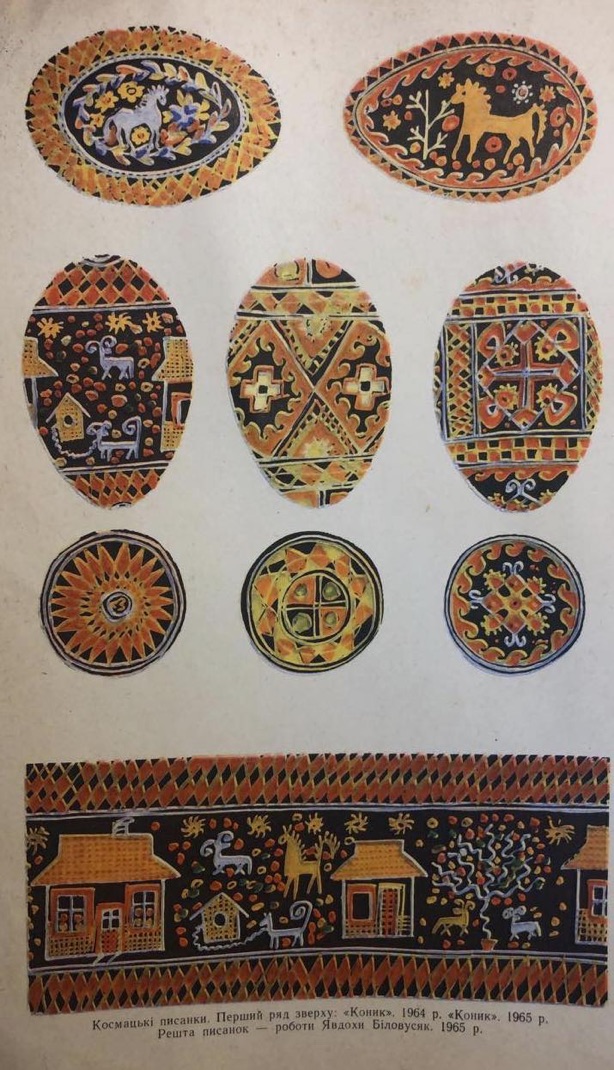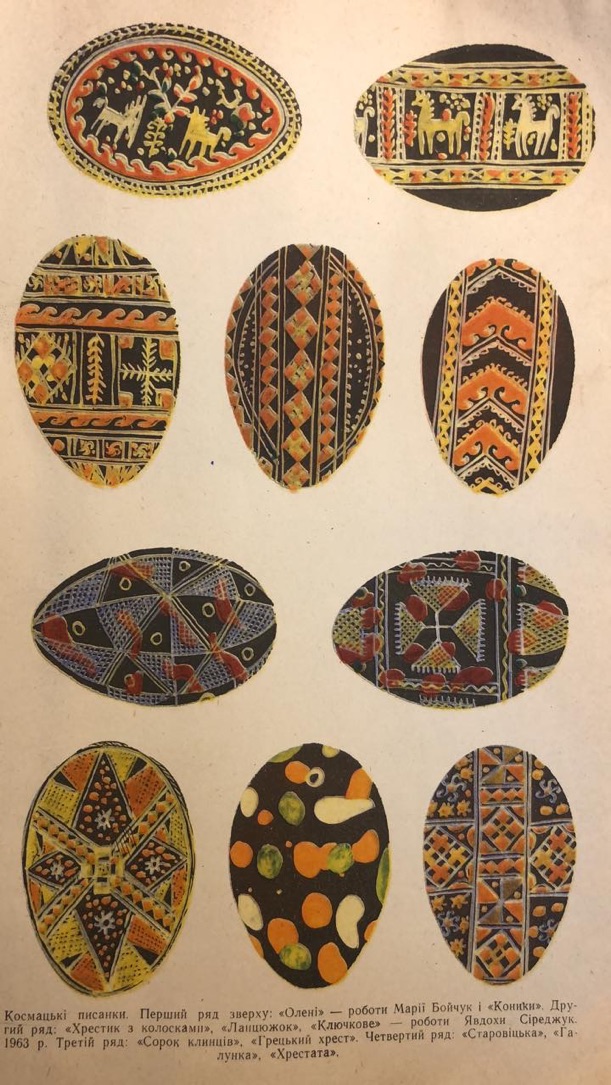1960s

Throughout the Soviet Era, which was much shorter in western Ukraine than eastern, and began much later in the Carpathians, pysankarstvo continued to be practiced among Ukraine’s mountain people--the Hutsuls, the Pokuttians and the Bukovynians. In the 1960s there began to be publications which included information about this aspect of Ukrainian folk art, including Binyashevsky’s short book, “Ukrainian Pysanky.”
The two pages below are from a Ukrainian magazine found by someone on Facebook in a garage sale. No other information was given. The pysanky shown on both pages are from the village of Kosmach, which was on its way to becoming the center or market/commercial pysankarstvo in Ukraine. Here we can see what traditional folk pysanky looked like in the mid 20th century in this area.

Text: Kosmach pysanky. First row: “Konyk/Horse.” 1964. “Konyk/Horse.” 1965. The rest of the pysanky are the work of Yavdokha Bilovusyk. 1965.

Text: Kosmach pysanky.
First row: “Oleni/Deer” -- the work of Maria Boychuk and “Konyky/Horses.”
Second row: “Cross and kolosky,” “Lantsiuzhok (chain),” “Kliuchkove” (with keys) -- the work of Yavdokha Siredzuk. 1963.
Third row: “Forty wedges,” “Greek cross.”
Fourth row: “Starovitska” (old fashioned), “Halunka” (Easter egg), “Khrestata” (with crosses).
Soviet Era Pysanky
Back to Hutsul Home
Back to Carpathian Pysanky Home
Back to Regional Pysanky Home
Back to Traditional Pysanky HOME
Search my site with Google




